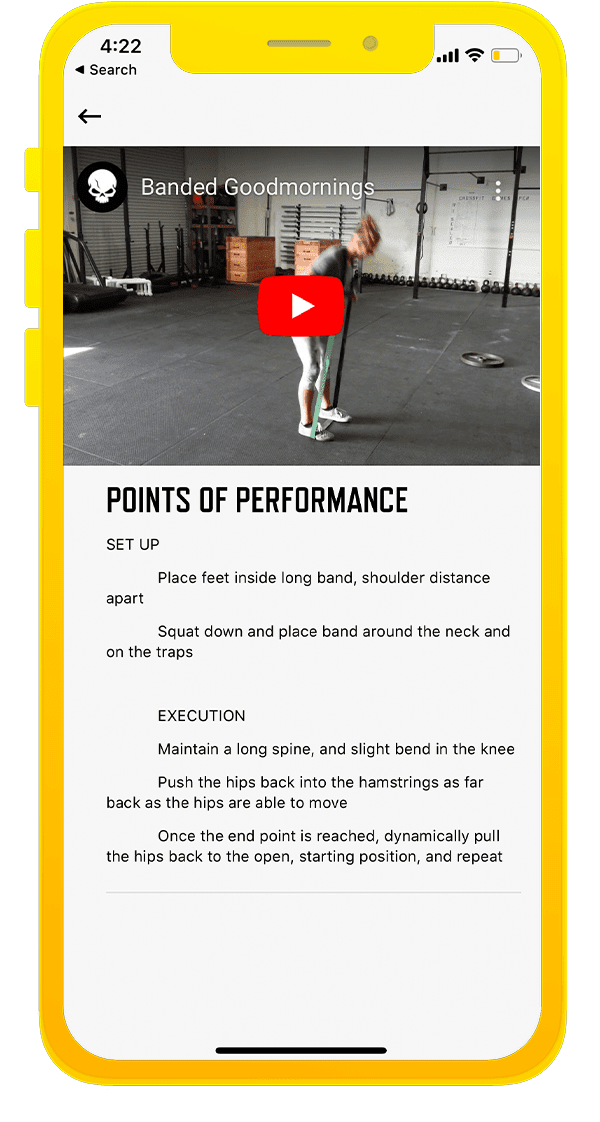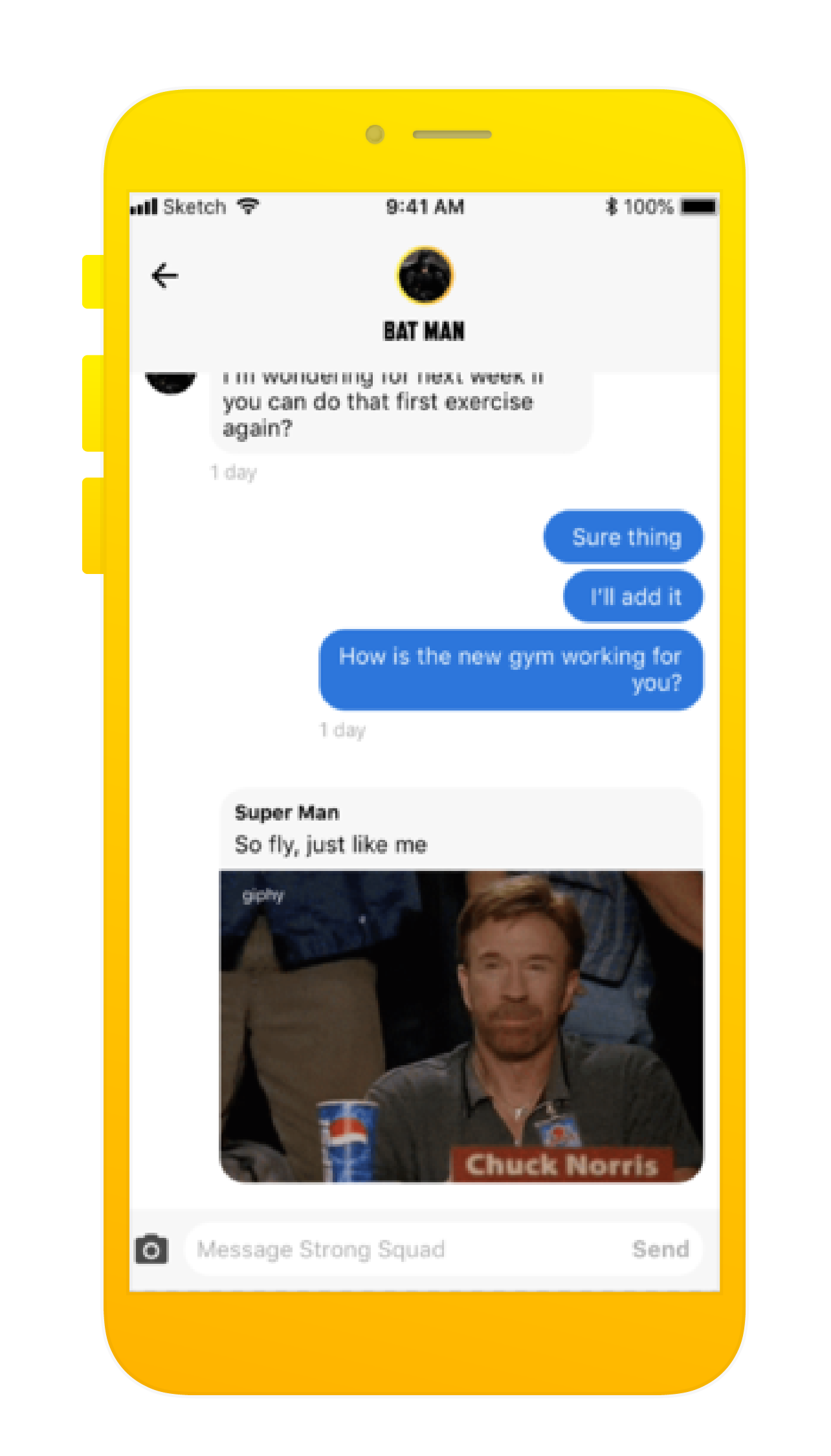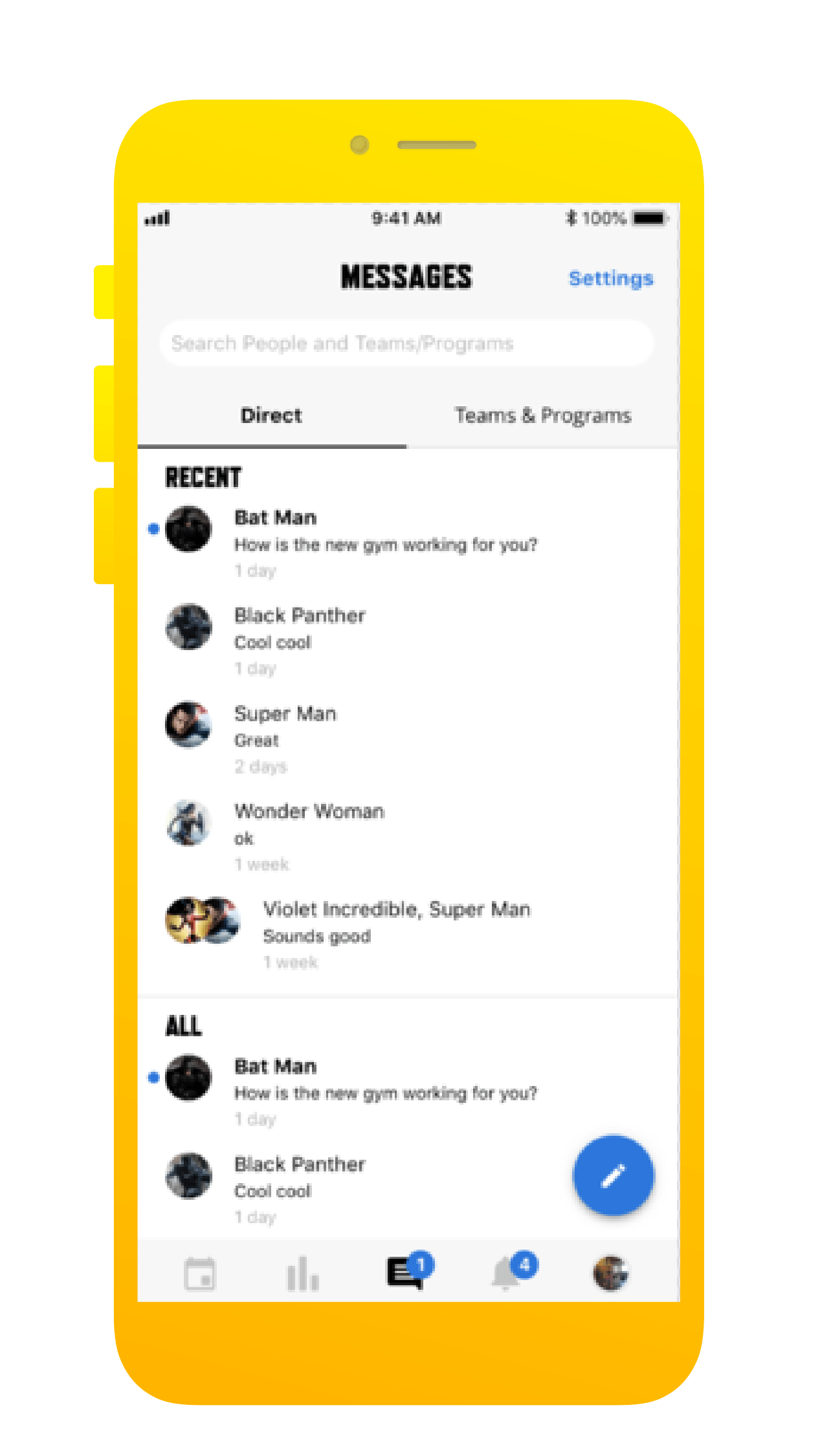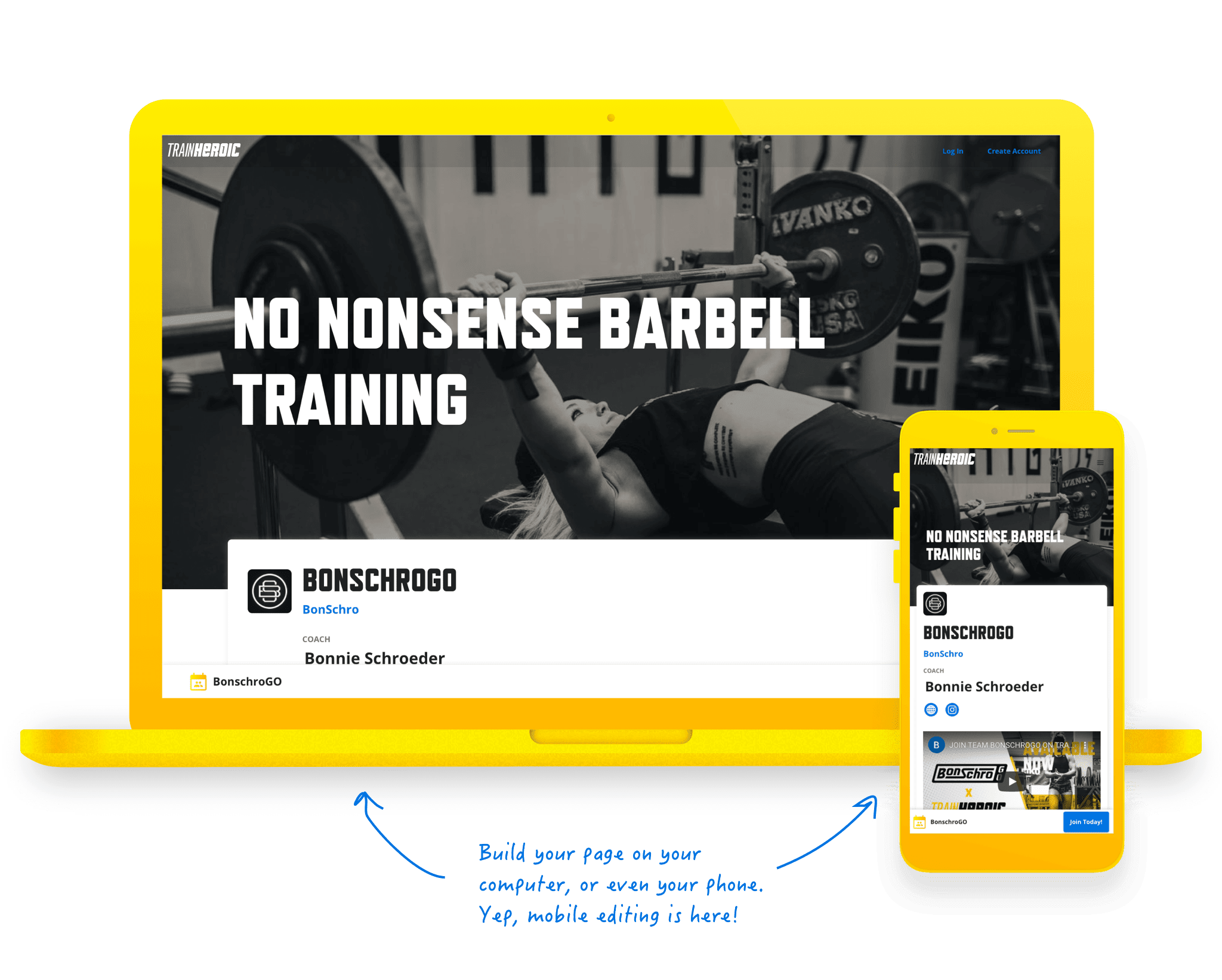An updated Guide To Navigating COVID-19 gym closures
COVID// is your business ready for a second wave of covid-19 related gym closures?
For gym owners, personal trainers, and anyone who operates a fitness business, 2020 has been an absolute rollercoaster.
This spring, as the COVID-19 pandemic shook the world, nearly every one of us was forced to shut our doors for some period of time.
Collectively the fitness industry weathered the storm, but many gym owners and fitness entrepreneurs unfortunately did not.
But, what if that was just the first storm? Are we prepared for another one?
We published our Retail to Remote Guide in March to help fitness business owners make a quick shift to offering their services online. Thousands of business owners followed the steps to mitigate the consequences of having to shut the doors of their gym.
Some gyms have reopened with new rules and regulations in place like mandatory reservations, mask wearing, and social distancing. Others, in places like Melbourne, still have not been given the green light to completely open. Others are seeing their government’s reopening plans being rolled back.
The scientists and medical experts have warned of another wave of infections, and recent data in the US and around the world shows that the number of COVID-19 cases are on the rise again.
This leaves us with a dark cloud hovering over our heads: what will we do if there is another wave of shutdowns?
The bad news: we can’t really know when or if another wave is coming.
The good news: we can all be more prepared if there is a second round.
So we’ve updated our Retail to Remote Guide to provide actionable insights and steps you can take to prepare your business for a potential second wave of closures.
We hope this guide is a useful resource to help you prepare for the worst. But more than that, we aim to provide you with a base to build from. This isn’t just a short-term fix; it’s a foundation from which to build a thriving business with diverse income streams.
Shifting from retail to remote doesn’t mean giving up on your brick and mortar. In fact, it doesn’t even mean you coach primarily remote. The most successful coaches in our network have added remote training as an additional income stream to retain clients longer, make more money, and provide an option to weather storms like COVID.
When we say “bring your training business online”, it’s important to frame two things:
Your remote training business is not simply your retail business slapped onto a website or into a platform like TrainHeroic. It’s actually a new business line complete with its own pricing, packaging, and positioning. This may sound daunting, but we’ll walk you through the easy steps to bring it to market.
If you think about an online coaching business as only providing programming to your clients in a remote context, there is a great chance you fail. Your clients pay you for coaching, not programming. They come to you looking for progress toward a goal. For support. For your expertise. For motivation. Only by providing all of these things can you create a product worth buying in your clients’ minds.
// The guide
We’ve updated this guide with new tips and tools, and also broke it out into three easy-to-follow sections.
Bringing your coaching business online is as simple as: what, why, and how.
What, exactly, are you offering?
Why would your clients value it?
How do you bring this to market?
// What exactly is remote training?
The products and services you provide to your clients in a remote setting might feel different on the surface than what you offer in person. In reality, they aren’t. Providing real remote training services for your clients is much more than posting a daily workout to Instagram or doing group sessions on Zoom. Real remote training services look a lot like the services you offer in your gym or in person.
It’s best to frame our mental model in a way that leans away from simply providing remote programming for clients to do at home, and into the construct of creating an engaging and rewarding remote training experience.
Serving gym owners, personal trainers, and coaches across a wide spectrum, we’ve seen TrainHeroic users offer three broad categories of remote training products, which align to what they offer clients or members in person.

Personalized programming, personalized coaching
We see this most often deployed by trainers who offer high-touch, concierge service to their clients during “normal” times. They continue to provide a high-touch, highly customized training experience while remote.
Many continue to charge at or near their full rate and focus on providing motivation, accountability, and specific instruction using tools like chat and video review. The biggest challenge many report is adjusting programming to allow their clients to work out at home, often with limited access to equipment.

Group programming, group coaching
We see this most often deployed by coaches who provide large group training while in person: like boutique gyms, HIIT classes, etc. We have also seen many personal trainers offer this as an add-on service to their standard personal training clients when they have to cut back on the number of sessions per week they provide.
Many have offered this type of package at a flat rate ranging from slightly below their standard group training rate to 50-80% of their standard personal training rates. The biggest challenge many report is matching the energy of a large in-person class.

Group programming, personalized coaching
We see this most often deployed by trainers and coaches who offer a blend of high-touch coaching with standard programming, sometimes specialized and customized slightly for specific clients. Think: CrossFit gyms, weightlifting gyms, etc.
Many continue to charge just below their full rate and focus on providing motivation, accountability, and specific instruction using tools like chat and video review in addition to the personalized adjustments to the group programming they provide in person. The biggest challenge many report is adjusting programming to allow their clients to work out at home, often with limited access to equipment.



TrainHeroic allows you to upload custom exercises and points of performance. Our most successful coaches build in detailed coaching notes and instruction for their remote clients.
// Thinking beyond the sets and reps
The value you deliver to your clients may seem like it has changed. It hasn’t.
You are not your gym. You are a coach.
The real value your clients get from coaching is entirely on a human level. Motivation, direction, instruction, and feedback are all core to coaching. These are the keys to helping your clients successfully crush their goals.
This hasn’t changed in a remote setting. The context and medium have just evolved.
Services included in your in-person training packages that may go unsaid like communication, motivation, form review and coaching check-ins, are much better positioned explicitly for remote training offerings. It’s important that you are clear on what your clients should expect from you if you are engaging in remote training with them for the first time.
As the concept of remote training may be new to your clients, it’s not enough to simply roll over your pricing for the services you provided in the gym to what you’ll provide in a remote context.
Selling remote training to your clients will take some work. Packaging and presentation of your remote training services can feel daunting, but we’re here to help you drive clarity and perceived value to your clients.
Think about how you’ll provide the following benefits to your clients in a remote setting, and how you’ll incorporate these into your remote training product offerings:
Your Title Goes Here
Daily Interactions
Focus on daily interactions with your clients. It’s not enough to simply provide your clients with programming for the day and expect them to continue to pay for your services.
Go above and beyond their expectations. Provide them with clear direction, shoot a video of yourself prepping them for the day’s training, make time to meet on Skype or Zoom, do a live session together using Facebook Live or the FaceTime app.
Take the time to interact with each client individually. Comment on their hard work, and shoot them over a video or a GIF to keep them accountable.
Better yet, ask them to shoot and upload video for you to give them feedback on their form.

Motivation and accountability
Focus on the WHY. This tip comes from our friends, and trusted source at Two-Brain Business.
Remind your clients why they signed up for your gym or for training sessions with you in the first place. Drive home the point that now is not time to let off the gas on their training journey. “We don’t want you to lose the buffer of health and immunity we’ve built together.”
Instead of just delivering a training session, walk your client through the reasoning you used to build it. Take the time to tell each client “here’s how today’s session is going to help you.”
For example:
- To the sprinter: “I picked this workout to improve your ability to buffer lactic acid when your heart rate exceeds 165 BPM. Think about your final 100m while you’re doing it.”
- To the Mom of three working remotely and juggling her kids: “This is the time where you’re gonna let it all hang out. I want you working so hard you forget about your entire day, if only for a moment.”
Pro tip: You can use the same rationale with multiple clients or the same training session with different rationales.
- To the new client: “Our goal today is to keep moving. It’s OK to slow down but try not to stop. I’d like you to record your split times each round and send them to me so we can analyze your performance. We’ll pick the next few workouts based on those results.”
- To the veteran: “My goal for you today is to see how localized fatigue affects your general performance. Instead of being limited by hitting a high HR, I want to see what happens when lactic acid builds up. So there’s a small mental component here too. To help, please try to do all of the squats unbroken, hit the first run hard, and keep all your other run times within 20 percent of your fastest time.”
community
A huge value for many clients at your gym is the community. Community and competition help us assign purpose to our training.
- Create challenges and online competitions to keep your community accountable and engaged. You can easily program competition with TrainHeroic by using our leaderboard functionality.
- Be a good moderator. Some gyms just have tight-knit communities. You may drop them all into one feed and they just go nuts talking to one another. Other times, it takes some work to start the conversation.
-
- Ask specific questions to the group: what is your biggest struggle training at home and how are you managing it?
- Solicit feedback: who liked today’s training session? What movements do you miss?
-
DAILY INTERACTIONS
It’s not enough to simply provide your clients with programming for the day and expect them to continue to pay for your services. Go above and beyond their expectations. Provide them with clear direction for the day’s work, shoot a video of yourself prepping them for the day’s training, make time to meet on Skype or Zoom, do a live session together using Facebook Live or a FaceTime app. Take the time to interact with each client individually. Comment on their hard work, and shoot them over a video or a GIF to keep them accountable.
FOCUS ON THE “WHY”
Focus on the WHY. This tip comes from our friends, and trusted source at Two-Brain Business.
Remind your clients why they signed up for your gym or for training sessions with you in the first place. Drive home the point that now is not time to let off the gas on their training journey. “We don’t want you to lose the buffer of health and immunity we’ve built together.”
Instead of just delivering a training session, walk your client through the reasoning you used to build it. Take the time to tell each client “here’s how today’s session is going to help you.”
For example:
- To the sprinter: “I picked this workout to improve your ability to buffer lactic acid when your heart rate exceeds 165 BPM. Think about your final 100m while you’re doing it.”
- To the Mom of three working remotely and juggling her kids: “This is the time where you’re gonna let it all hang out. I want you working so hard you forget about your entire day, if only for a moment.”
Pro tip: You can use the same rationale with multiple clients or the same training session with different rationales.
- To the new client: “Our goal today is to keep moving. It’s OK to slow down but try not to stop. I’d like you to record your split times each round and send them to me so we can analyze your performance. We’ll pick the next few workouts based on those results.”
- To the veteran: “My goal for you today is to see how localized fatigue affects your general performance. Instead of being limited by hitting a high HR, I want to see what happens when lactic acid builds up. So there’s a small mental component here too. To help, please try to do all of the squats unbroken, hit the first run hard, and keep all your other run times within 20 percent of your fastest time.”
CULTIVATE COMMUNITY
A huge value for many clients at your gym is the community. Community and competition help us assign purpose to our training.
- Create challenges and online competitions to keep your community accountable and engaged. You can easily program competition with TrainHeroic by using our leaderboard functionality.
- Be a good moderator. Some gyms just have tight-knit communities. You may drop them all into one feed and they just go nuts talking to one another. Other times, it takes some work to start the conversation.
-
- Ask specific questions to the group: what is your biggest struggle training at home and how are you managing it?
- Solicit feedback: who liked today’s training session? What movements do you miss?
-




TH Chat supports in-app text based messaging, reactions, GIFs, and video upload.
// Packaging & presentation
You’ve identified the basic construct of your remote training offerings. You’ve determined the amount of personalization you’ll provide for both programming and coaching. You’ve thought through how you’ll add value and keep your clients engaged in a remote context. Now it’s time to package it all up and determine what you can charge.
You don’t offer a one-size-fits-all membership or in-person training solution, and the most successful remote coaches don’t either.
The best answer is to offer your clients options.
A tried and true standard is a three-tier or “Good, Better, Best” model. Provide clients a low barrier entry point with options to scale.
This concept works for any of the remote training constructs discussed earlier in this article.
Our friends at Two-Brain Business put together an easy to use three-tier packaging recommendation for online training that we really like as an example:
Price this level to be slightly more expensive than your most popular group rate. (During COVID: Offer it at the same rate they’re paying but make sure they know it’s a more expensive service.)
Package:
- Group programming.
- 2x daily communication touch points.
Price this service about 33 % more than the base package.
Package:
- Group programming tailored to each individual client
- 2x daily communication touch points.
- Added nutrition planning or additional live coaching session
Price this level of service to be about twice as costly as the base package.
Package:
- Personalized programming
- 2x daily communication touch points.
- Added nutrition planning or additional live coaching session
- Regular online video goal reviews with stats (data) and nutrition plan updates
LEVEL 1
Price this level to be slightly more expensive than your most popular group rate. (During COVID: Offer it at the same rate they’re paying but make sure they know it’s a more expensive service.)
Delivery: Group programming. 2x daily communication touch points.
LEVEL 2
Price this service about 33 percent more than the base package.
Delivery: Group programming tailored to each client individually, plus nutrition plans.
LEVEL 3
Price this level of service to be about twice as costly as the base package.
Delivery: Personalized programming and a personalized nutrition package, with regular online video goal reviews and nutrition plan updates.
As you build out your packages, be mindful of “Leaders, Fillers, and Killers.” This model, pioneered by Simon Kutcher & Partners, works like this:
- Leaders are the primary solutions customers are willing to pay for. Think programming and communication.
- Fillers are included in a bundle, but not core to the value. Some clients will value them, but not everyone. Fillers are nice-to-haves. Think fully custom programming, FaceTime coaching, access to a community feed, etc.
- Killers are add-ons that devalue the bundle in the buyer’s psychology. No one wants to pay for something they don’t need or won’t use. Think of killers as don’t-want-to-haves. An example might be adding in a Spotify playlist of your favorite Death Metal tracks to train to.
A simple illustration of this standard is a value meal:

The Burger is the leader

The fries, side, and drink are filler

Coffee or dessert would be killers. Most people do not want to pay for this, so fast food joints don’t bundle them
Now that you’ve packaged your online training solution, you know WHAT you’re selling. It’s time to shift attention to WHY your clients or prospective clients will pay you for it.
Your clients associate you and your gym with providing a specific value. If you are a gym owner, that association may currently be “a place to train” or “access to equipment”.
You have an opportunity (and a need) to reframe that.
After all, we know this isn’t really why clients pay you. They pay for your expertise as it relates to their progress toward a goal.
Equipment and space are not the only reasons your clients joined your gym. Programming is not the only reason they pay you for training.
Your clients are paying for progress. They pay to move closer to a goal they care about. To move closer to their ideal self.
Appealing to these deeper motivations is the quickest path to making a sale.
// Positioning
Positioning refers to the place that a brand (you) or product (your remote training solution) occupies in the minds of customers, and how it is distinguished from the products of the competitors (other gyms or trainers, free workout apps, etc.).
How you talk about your product, the copy you use on your website or social media, and even the names you give your products all have a huge impact on how they are “positioned” in a client’s mind.
We recommend that coaches position their remote training offering as a positive training experience, not just a short-term fix.
As a gym owner or personal trainer, your job right now is to find new and novel ways to help your clients achieve progress even when you can’t physically be together.
Focus your messaging on other benefits like community, motivation, goal orientation, and accountability that you can provide with your online training solution. Think of creating a virtual gym atmosphere rather than simply a mechanism to deliver programming to your clients.
Keep this in mind with all of your communication with your clients: from your website, to social media, to email.
Below is an email example created by our communications manager, Jenn.
Serving our athletes/clients/members has always been about more than providing a means to train. We believe it is about more than getting you the sets and reps. It’s about building a sense of community, connection, accountability, and a trusted outlet where you can focus on one thing: achieving your goals.
Afterall, the gym is the place we go to clear our head, to de-stress, and to become our best self.
During a time like this, it’s especially important that we find new ways for our members/clients/athletes to continue fulfilling those same needs.
The good news is that even without the fancy gym equipment or cutting-edge facility, we can still provide the same quality of coaching and leadership, only this time, it’s virtual.
We are excited to announce that we have chosen TrainHeroic as our online coaching solution in order to continue to provide our community of members a way to train. This opens up new opportunities for us, allowing our members to train on their own terms and when it works for them, with our expert guidance. For the foreseeable future, the virtual gym is the new way to train.
Even if we’re not able to physically be in the gym together, our community of connected athletes doesn’t have to fade away. Let’s get creative, be agile, and share ideas with each other as we navigate this unknown together, and we’ll come of it with a stronger community than ever before.
Here’s a pro tip: Position your virtual training product as an add-on to your client’s membership while your gym is still open.
Making this sale while your clients are engaged is much easier than trying to sell remote training during the midst of another shutdown. Take advantage of the fact that we can get ahead of a second coming wave of shutdowns – a luxury we did not have this spring.
If you position remote training as a short-term bridge, that’s all your clients will ever see it as. By doing so, you’ll drastically minimize your chances of retaining them for extended periods of time.
// Tackling the programming issues of training at home
While it’s not the only value you provide to your clients, we’d be kidding ourselves to say that programming isn’t a huge part of coaching. Programming is an art, and right now you might be feeling like Picasso without a paintbrush.
Quickly giving your clients and gym members something to keep them active and engaged is vital. We’ve added two free bodyweight programs to every TrainHeroic account to make this easier. The more difficult part is what comes next, and that’s where your creativity and instincts as a coach will shine.
The market is flooded with free bodyweight programs and solutions. From Instagram to the Nike Fit app, it seems endless.
These free solutions are workouts, not training. Developing at-home, low-/no equipment PROGRAMS that actually are progressive and get results (vs. just getting sweaty) is the differentiator you can provide.
You have to provide 10x the value of the free solutions if you want to keep your clients. Your clientele hired you for results, and you have to deliver.
Now is the time to get creative with your programming. Especially if your clientele does not have access to a barbell. Here are some of the most creative solutions we’re seeing our network of coaches deploy:
Many of the gym owners in our network have mentioned they are loaning out equipment to their members, and we love the idea.
It almost seems like a sin to let this equipment sit idle in an empty gym.
Loaning your clients the equipment they need to train creates value in your customers’ eyes, allows you to program with more variance for them, and does wonders for building a lasting relationship.
Better yet, this time around plan ahead and charge your clients to rent equipment. With liftable iron currently near the price of gold, this is both a much needed service, and an additional revenue stream during an uncertain time.
Our friends at Power Athlete HQ put together an amazing home gym hack using a $50 shopping list for any hardware store.
Third Monkey, a Power Athlete team in the TrainHeroic marketplace, is completely programmed based on the equipment created with this list. This allows the team at PAHQ to progress and overload their athletes, driving maximal gains with a minimal investment in equipment.
From the #dogsquat challenge to the seemingly neverending “Do 10, Give 10” challenges on social media, people are proving that necessity is the mother of invention.
Gallon jugs, book-filled tote bags, cat litter bags, the list is endless. Be a source of creativity for your athletes and add programming notes to your training that list easy household items to sub for equipment they may not have.

Give your clients a shopping list. Keep the investment minimal, but work to help them build out home gym solutions.
A couple kettlebells, some bands, and a set of dumbbells allow you to be far more varied in your programming.
Giving your clients a simple shopping list takes out the guesswork on their end.
LOAN OUT EQUIPMENT
Many of the gym owners in our network have mentioned they are loaning out equipment to their members, and we love the idea.
It almost seems like a sin to let this equipment sit idle in an empty gym.
Loaning your clients the equipment they need to train creates value in your customers’ eyes, allows you to program with more variance for them, and does wonders for building a lasting relationship.
Better yet, this time around plan ahead and charge your clients to rent equipment. With liftable iron currently near the price of gold, this is both a much needed service, and an additional revenue stream during an uncertain time.
GO PRIMAL
Our friends at Power Athlete HQ put together an amazing home gym hack using a $50 shopping list for any hardware store.
Third Monkey, a Power Athlete team in the TrainHeroic marketplace, is completely programmed based on the equipment created with this list. This allows the team at PAHQ to progress and overload their athletes, driving maximal gains with a minimal investment in equipment.
JUST LIFT THINGS
From the #dogsquat challenge to the seemingly neverending “Do 10, Give 10” challenges on social media, people are proving that necessity is the mother of invention.
Gallon jugs, book-filled tote bags, cat litter bags, the list is endless. Be a source of creativity for your athletes and add programming notes to your training that list easy household items to sub for equipment they may not have.

CREATE A SHOPPING LIST
Give your clients a shopping list. Keep the investment minimal, but work to help them build out home gym solutions.
A couple kettlebells, some bands, and a set of dumbbells allow you to be far more varied in your programming.
Giving your clients a simple shopping list takes out the guesswork on their end.
This can be a daunting question. In many cases, the best approach to taking your new remote training offerings to market will depend on what they are.
// Bringing 1:1 remote personal training to market
If you’re a personal trainer who will offer personalized programming and personalized coaching, your best bet may be to talk individually with your clients. Your go-to-market will be largely 1:1 direct communication.
After all, reaching out directly to a dozen clients isn’t a daunting task. You already have a payment system in place and there is really no need to change that. You can use a platform like TrainHeroic to facilitate engagement, communication, and program delivery while using your own payment systems.
// Bringing group training to market
What about other cases? What do you do if you need to not only facilitate group training to a large-scale client base, but you also need to sell to many more clients than you can realistically handle 1:1?
If you own a gym, you’ve probably got a marketing website. Maybe it’s already e-commerce ready. Maybe you even already sell merchandise, supplements or programs through it. If so, you’re in luck and potentially a step ahead of the game. Read on for tips on driving some traffic to your web ecosystem.
If you aren’t in that position, you need to build a sales page and potentially a payment option to collect fees for your remote training services from your clients.
A sales page isn’t just a mechanism to collect credit card payment. It’s your digital gym entry way. Your 24/7 sales staff. It should showcase your digital product offering in a beautiful way, highlighting your positioning.
A great sales page legitimizes your new remote training product and allows you to easily collect payments in the same ecosystem you’ll use to deliver training to your clients.
Knowing firsthand how difficult it can be to build an e-commerce-equipped, fast, and beautiful sales page, we set out to help coaches tackle this challenge during the COVID pandemic.
The vision for our new 3.0 PageBuilder was simple: Make coaches look pro, with less effort, by delivering an easy-to-use sales page builder.
No coding.
No wrangling hard-to-manage contractors.
And no need to retain a graphic designer on your payroll.
Just clean, compelling listing pages any coach can design, update, and manage themselves.
We built these pages to give personal trainers and gym owners an even easier alternative to solutions like WordPress or Squarespace. The intuitive builder allows you to bring your remote training product to market quickly and effectively.
You can learn more about them here.

We should note that the TrainHeroic Pagebuilder only allows coaches to offer programs for purchase and group training memberships. We currently do not support the ability to sell personal training via the Pagebuilder.
// Driving traffic to your sales page – wherever it may be
Your first sales of remote training should be your existing clients. We mentioned earlier in this guide that your best bet is to sell them remote training as an add-on to their current membership while your gym is open.
Adding another revenue stream with your current clients helps protect you in the event of a second wave of COVID gym closures. That’s great, but why stop there?
In a very real way, a second wave of shutdowns presents an opportunity for you. For every savvy business owner who plans ahead, there will be many who don’t or can’t.
You have an opportunity to provide valuable coaching for anyone who’s lost their ability to train in a gym that is now closed. Invest in your business and capitalize on the opportunity to expand your sphere of influence.
With your gym closed, chances are you are adjusting your own schedule to a new normal. Use it to build an audience and traffic pipeline for your new online business.
Repurpose the time you normally spend on admin, cleaning, and the thousands of other duties that come with owning a gym.
Director of TrainHeroic’s customer team and long-time self-proclaimed brand marketing nerd, DJ Horton, says “Now is the time to build your brand through value delivery”.
Not all of us dream of being an “influencer.” In fact, if you’re like me, the word triggers a bit of Pavlovian onset nausea. But let’s stop and think about the word influencer. An influencer is simply someone whose insights, thoughts, and actions influence behavioral change in others.
Isn’t that pretty much what being a coach is?
Your clients look to you for your expertise, and that hasn’t stopped. The pre-session chats and water cooler convos aren’t possible right now, but social media is a great replacement for the time being.
Great content balances educational value with entertainment. In other words, it’s more than just posting shirtless training videos and “squat shots” 🍑.
Share your expertise through engaging posts: video chats, whiteboard sessions, sliding cards with graphics, even the *occasional* inspirational quote all provide value to your audience.
In the short term, this is another channel to keep your athletes engaged and build your gym community.
In the long term, this is a great business move. Build your online community and take advantage of the fact that you can now coach people across the world. Dare I say, this may even be an opportunity for growth.
Here are some quick tips from the TrainHeroic Marketing team to get you started:
Your Title Goes Here
be authentic
Being authentic is vital. We’re all bombarded with content day in and day out. If it isn’t valuable, we push it aside or ignore it completely. Our radar for authenticity is a finely tuned machine at this point.
Think long and hard about what you are passionate about, and avoid the trap of trying to provide “something for everyone”. If you are an expert in training and passionate about outdoor sports, talk about that. Share your stories. Be specific.
be creative and (semi) polished
Not everything you produce needs to look like it took a design team hours to create. Don’t let that fear or lack of skills stop you.
You also don’t want to use a crappy fonts and Microsoft Paint. There are thousands of tools out there for creating very clean and professional visuals.
Adobe Spark & Canva are two that offer free resources with a simple drag and drop editor. They have thousands of templates that you can easily customize with your own images and copy.
be personal
Speak directly to your audience. The same insights you are providing to your clients can be repurposed and delivered to a broader audience online.
Get comfortable talking into a camera. It sucks for most of us, but when you get past the awkwardness, you’ll be just as comfortable as addressing the group of athletes you train in your gym.
be consistent
Post. Every. Day.
You aren’t going to go viral overnight. Start by inviting your clients to follow your page, and over time you’ll build a following if you post valuable content consistently.

Don't fall into the trap of imposter syndrome
You don’t need the most alphabet soup after your name, the longest/ most impressive resume, or celebrity status to build a following.
Don’t listen to the voice in your head when it says, “nobody is going to follow me, what do I know?”
Just offer up your expertise. You’ve worked your ass off for it. Thousands of hours studying, coaching, and reading have all made you an expert.
Do some research
If you are new to social media for business, consider doing some research. It is NOT the same as running your own personal page.
Timing your posts, understanding your audience’s behavior, and social media analytics are all probably new topics to you. We’ll continue to share insights with you, but also consider spending some time reading resources like these:
BE AUTHENTIC
Being authentic is vital. We’re all bombarded with content day in and day out. If it isn’t valuable, we push it aside or ignore it completley. Our radar for authenticity is a finley tuned machine at this point.
Think long and hard about what you are passionate about, and avoid the trap of trying to provide “something for everyone”. If you are an expert in training and passionate about outdoor sports, talk about that. Share your stories. Be specific.
BE CREATIVE AND (SEMI) POLISHED
Not everything you produce needs to look like it took a design team hours to create. Don’t let that fear or lack of skills stop you.
You also don’t want to use a crappy fonts and Microsoft Paint. There are thousands of tools out there for creating very clean and professional visuals.
Adobe Spark & Canva are two that offer free resources with a simple drag and drop editor. They have thousands of templates that you can easily customize with your own images and copy.
BE PERSONAL
Speak directly to your audience. The same insights you are providing to your clients can be repurposed and delivered to a broader audience online.
Get comfortable talking into a camera. It sucks for most of us, but when you get past the awkwardness, you’ll be just as comfortable as addressing the group of athletes you train in your gym.
BE CONSISTENT
Post. Every. Day.
You aren’t going to go viral overnight. Start by inviting your clients to follow your page, and over time you’ll build a following if you post valuable content consistently.

DON’T FALL INTO THE IMPOSTER SYNDROM TRAP
You don’t need the most alphabet soup after your name, the longest/ most impressive resume, or celebrity status to build a following.
Don’t listen to the voice in your head when it says, “nobody is going to follow me, what do I know?”
Just offer up your expertise. You’ve worked your ass off for it. Thousands of hours studying, coaching, and reading have all made you an expert.
DO SOME RESEARCH
If you are new to social media for business, consider doing some research. It is NOT the same as running your own personal page.
Timing your posts, understanding your audience’s behavior, and social media analytics are all probably new topics to you. We’ll continue to share insights with you, but also consider spending some time reading resources like these:
Remember, creating this content isn’t about selling. It’s about providing value and building an audience. People want your insights & your opinion. Ask yourself: if I continue to post this type of content daily for several months, then stop, would anyone reach out to ask why?
// What comes next?
Well, we aren’t sure. Hopefully we avoid a second wave of shutdowns, and adjust to a new normal.
Even if that happens, we hope the content in this guide has enlightened you to the value of adding an additional revenue stream to your business by creating a remote training product offering. The freedom, security, and business growth it can provide are all real benefits in times of COVID shutdowns and “normal” times as well.
We’ll keep the advice coming on our social media, this blog, and through webinars. We’ve created a dedicated Instagram Account where we’ll share content exclusively created for personal trainers, gym owners, and fitness entrepreneur. Give us a follow, reach out with questions, and let us know how we might be able to help.
We’re in this together.
– DJ Horton, Director of Customer Team, TrainHeroic
READY TO TRY TRAINHEROIC?
Our powerful platform connects coaches and athletes from across the world. Whether you are a coach or trainer looking to provide a better experience for your clients, or you’re an athlete looking for expert programming, click below to get started.
Want more training content?
More coaches and athletes than ever are reading the TrainHeroic blog, and it’s our mission to support them with the best training & coaching content. If you found this article useful, please take a moment to share it on social media, engage with the author, and link to this article on your own blog or any forums you post on.
Be Your Best,
TrainHeroic Content Team
HEROIC SOCIAL
HEROIC SOCIAL
TRAINING LAB
Access the latest articles, reviews, and case studies from the top strength and conditioning minds in the TH Training Lab

